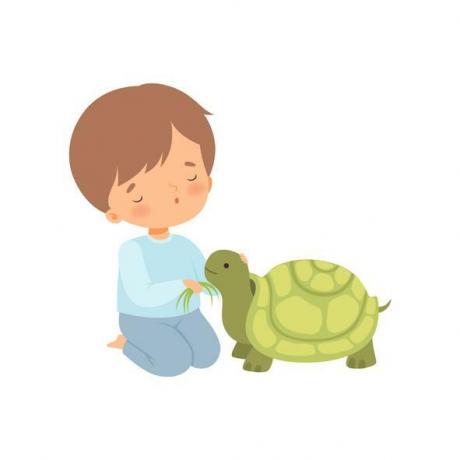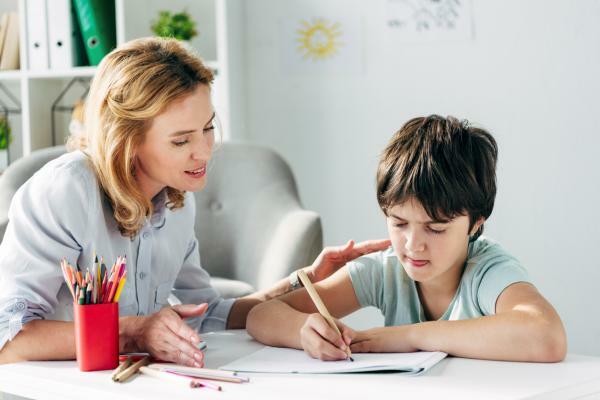When we speak of self-control we refer to that ability to control oneself. In other words, it's about the ability to control one's impulses, emotions, desires, actions, among others.
Moreover, self-control is a capacity that allows you to achieve a benefit series, such as:
- A better expression
- Take into account the views and opinions of others
- Think more clearly
- Improve social relationships
- Improve self-esteem
- Causes a feeling of less vulnerability
- Easier to resolve conflicts
- Making better decisions
So that, self-control it is a capacity that can be acquired over the years. Specifically, the most effective procedures commonly used to acquire self-control are: on the one hand, the self-instruction procedures and, on the other hand, self-reinforcement procedures, or a combination of both of them.
- As to self-instructionWe refer to that procedure in which the individual gives instructions or orders to himself, in order to regulate his own impulsive behavior.
- Again, as to self-reinforcementWe refer to that procedure in which the individual offers himself, after performing a certain behavior, a series of reinforcements or positive consequences.
To acquire self-control behaviors in children, it is common to use techniques based on metaphors and Children's Stories adapted to the age of the individual, such as the turtle technique, the volcano technique, the Arturo bear technique, among others. Thus, metaphors and stories are a great tool for fostering the possibility of change, both behaviorally and cognitively.
The turtle technique begins with the story of the turtle:
Long ago, there was a beautiful young tortoise named Clota. Clota had just started classes, she was exactly X years old (X equals the age of the child to whom the story is read). Clota didn't like going to school too muchHowever, she preferred to stay at her home to be with her little brother and her mother. She didn't want to go to school to learn new things, she just liked to go running, playing, etc.
It seemed very complicated and very tiring to solve cards, copy what the teacher wrote on the board and / or participate in her activities with her other classmates. She also did not like to listen and attend to what the teacher explainedIt seemed more fun to her to make noises imitating the sound of car engines, and she never remembered that she shouldn't make those noises while the teacher was talking. Clota used to tease her companions and pick on them. For this reason, going to school was a very difficult situation for Clota.
Every day when Clota was on her way to school, she told herself that she would behave in the best possible way so as not to mess with her classmates. But even if she promised all this to herself, it was very easy for something to get her out of control and, in the end, she always ended up being punished, getting angry and fighting. So, she Clota had a very bad time, she often thought "I'm always getting into trouble, if I continue on this path, in the end I will end up hating the school and all the classmates and teachers."
In one of her worst days, when she felt bad, she ran into a wise old turtle, the largest she had ever seen in her entire life. It was a very large tortoise in every way, it was over 300 years old and as big as a mountain. Clota was a bit scared, she was addressing the old tortoise with a small and shameful voice. But after a short time, she Clota realized that the gigantic turtle was very nice and friendly and she, she seemed to be willing to help Clota in her bad day.
Then the old turtle said to Clota: “Hey! You know what? I will tell you a little secret that will help you: the solution to solve your problems is carried with you, on top of you ”. She did not understand him, and she looked at him expressing that she did not understand anything about her with her curious look. “Your shell is the solution! Don't you know what your shell is for? Clota kept looking at him with the face of knowing more. “The power of your shell is that you can get inside it and hide whenever you have feelings such as rage, anger, and so on. So, for example, you can hide whenever you feel like breaking things, screaming, hitting something or someone, among others. When you hide inside your shell, you can take advantage of that moment to rest, and wait until I am not so angry. That's why I recommend that the next time you get angry, get into your shell. "
Clota thought it was a very good idea. She was very happy and eager to try it and, well, try to control her anger at school. The next day of class she and she practiced it, when suddenly, one of her classmates accidentally hit her on the back. At that moment, she Clota began to get angry, so much so that she almost lost her papers and hit him back. But suddenly, she remembered the wise advice of the old tortoise. She then she scooped up, as fast as she could, her arms, her legs and her head inside her shell and she stayed there until her anger subsided.
Clota realized that it was a very good idea, since she loved being able to be so good inside her shell, where no one could disturb her. When he got out of there inside her, she was amazed to see that her teacher was looking at him with a big smile on her face, happy and proud of what Clota had done.
So she decided to keep using that trick for the remainder of the year. She used it every time a partner or something bothered her, but she also used it when she felt like hitting or arguing. After a while, she managed to always act this way, a very different way than she acted before. She was very happy and proud of herself and, all of her companions admired him for how she did it and were very curious to know what her secret was.

The turtle technique is one of the impulse control techniques to educate children and change misbehavior.
The turtle technique was devised and created by Marlene Schneider, in order to promote self-control behaviors to alleviate the impulsive behaviors of children in the classroom.
In order to capture the children's attention regarding the turtle technique, it is recommended to tell them a story (like the one you will find in the previous section), in children's story format adapted according to the age of each child.
The idea is that, through the story of the turtle, the children feel identified with the turtle small and young, so that they can extrapolate the resolutive behavior of the turtle to their daily situations in the classroom and, being able to control their own actions, emotions and feelings disruptive. That is why it is important to emphasize to them, at the end of reading the story, that when they sit down angry or upset, wanting to yell, hit, etc., they can do the same as towards the little girl turtle.
Thus, it is a emotional self-control technique metaphorical, in which the turtle is the character that represents the situation in which the children find themselves. Specifically, the turtle or turtle tale technique is composed of four phases:
- Phase 1: the child must recognize your emotions and stop to think (getting into her shell), and breathe calmly in order to think of possible solutions. In order to simulate the shell, the child can also pick up his legs by encircling them with his arms, so that he is more gathered and protected by himself.
- Phase 2: maintain posture tensely for about ten seconds.
- Phase 3: in this phase, the child must go loosening the tension from your body, and relaxing until your body is completely relaxed.
- Phase 4: in the final phase it is in which the child should be congratulated for his effort and for his result. It is a good way to ensure a greater chance of increasing the appearance of this self-control behavior. It is also important, at this stage, for the child to explain what made him feel angry and how he felt using the turtle technique.
In the following article you will find other strategies to control anger in children.


